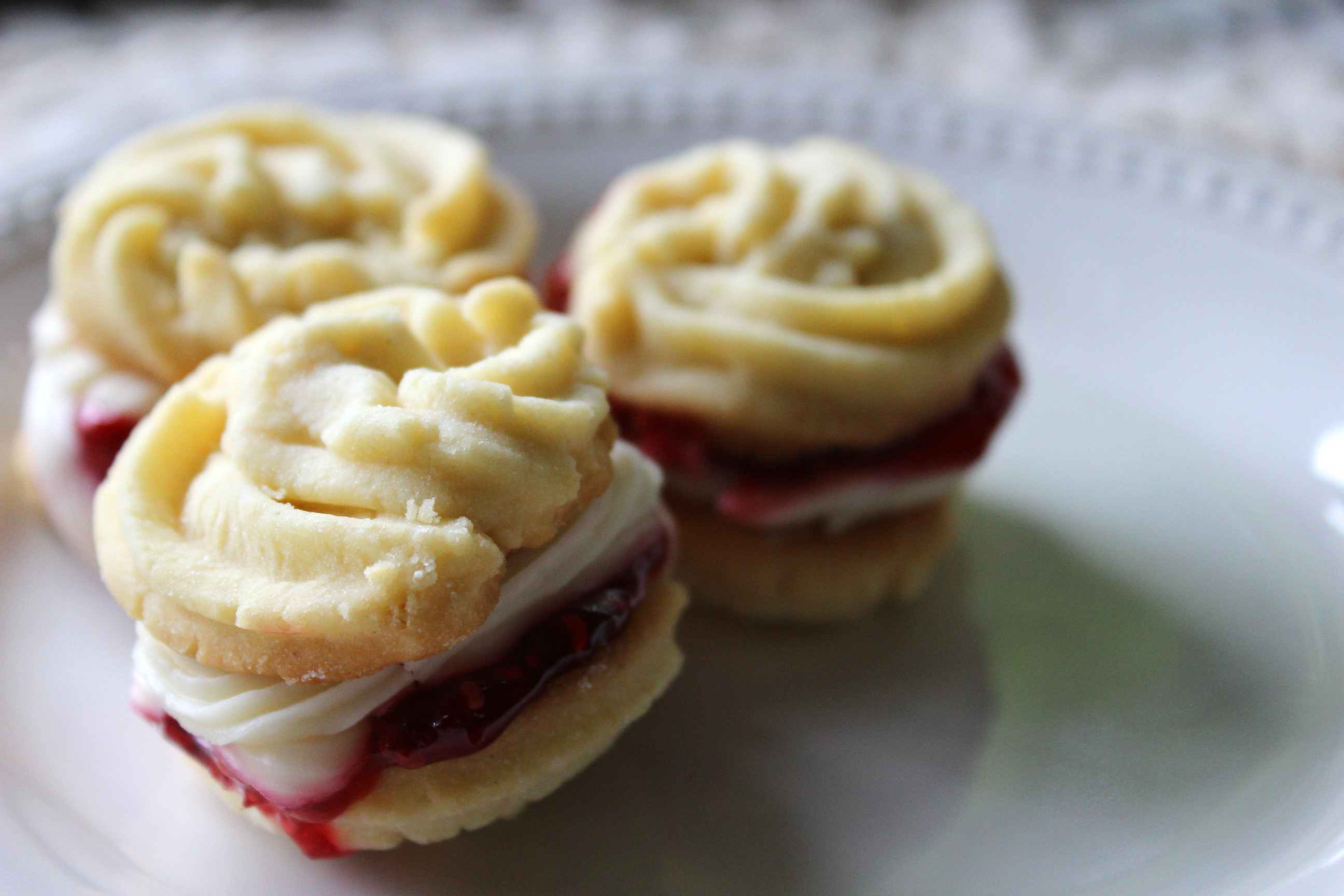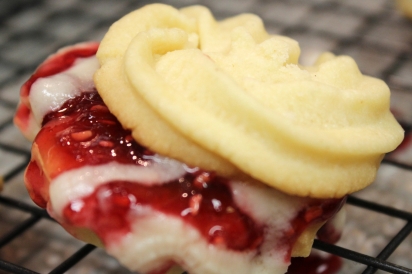Great British Blog-Along: Cake & Biscuits
"Great British Baking Show" returned to television in the U.S. last week, bringing some of the best of the U.K.’s amateur bakers to our screens. Like many, I’m drawn to the show for its good-natured competition and the riveting suspense of whether or not someone’s pudding is going to go horribly wrong.
When the show premiered on the BBC seven years ago under the title "Great British Bake Off," it sparked a renaissance in British baking and led to what’s been called the Bake Off effect — increased sales of stand mixers and appliances, as well as a renewed general interest in baking.
PBS syndicated Bake Off’s fourth, fifth, and sixth seasons and presented them as the "Great British Baking Show," currently available with a streaming subscription on Netflix and PBS Passport.
While this season has already aired in the U.K., Americans are nonetheless excited for its return stateside. (If you’ve seen my Tweets, you’ll note that I’m one of them.) What I’m about to do will probably be the reason I’ll never be allowed in their country. Each week, I will bake the technical challenge from season four — without practice — and see if I’ve got what it takes to make it to the final.
I’m calling it the Great British Blog-Along.
Want to join me on my blog-along? Get the recipes from each episode.
The back-to-back episode premiere of season four on PBS featured the show’s cake and biscuit weeks and two desserts I’d never heard of: Jaffa cake and Viennese whirls.
If the contestants on the show had to shop for ingredients in another country and figure out substitutes on the fly, it would be similar to my experience with these challenges.
Jaffa cakes have a thin layer of orange jelly, but not the jelly that we Americans know. I expected to make a marmalade, but the filling calls for a concentrated flavored gelatin that I have not found in Alaska. I used a recipe for jello jigglers from the Jell-O box to get the right consistency.

What really threw me for a loop was trying to decipher British baking terms. Is a bun tin just a muffin pan? When you say very softened butter, do you mean melted? Speak English!
(Thankfully, the lovely folks at Extra Crispy have you covered, fellow bakers. Here’s their guide to Great British Baking Show vocabulary.)
Biscuits, again, are not what we on this side of the pond might think they are. Biscuits = cookies. For the Viennese whirls, I had a plan. After watching the bakers struggle with piping the shortbread dough, I decided to buy a piping gun. Problem solved — or so I thought. It was easy enough to load the dough into the gun, but it was too cold and thick to push through my star nozzle.
I pulled all of the dough out and put it into a traditional piping bag (thank goodness, I had a backup plan) and spread it out and let it warm and soften on top of the oven. Still, it was a royal pain in the rear to get the dough into shapes that resembled Mary Berry’s lovely whirls.
Then came the jam. Mary’s recipe calls for gelling sugar, not something we have at a typical store in Alaska.
Thanks to some Briton friends and the internet, I decided to go with a ratio of 1 cup of sugar to ⅔ teaspoon Sure-Jell pectin. Still, my jam wasn’t quite thick enough and ran all over when I piped my vanilla buttercream onto it.
With the help of the freezer, I was able to create some sandwich cookies that weren’t too atrocious.

(And one that was.)

All in all, for both technical challenges I’d say I ended up smack in the middle. I wouldn’t have gone home and I’d live to bake another day.
Paul would say my piping and presentation need work, Mary would comment on how I need to temper my chocolate so it shines, and I would live on to bake another day in the tent.
Next week, I’ll take on Dampfnudel — Paul’s technical challenge for bread week.
(What have I gotten myself into?)
The Great British Baking Show airs Fridays at 8 p.m. on KAKM from Alaska Public Media and can be streamed free online at PBS.org.






